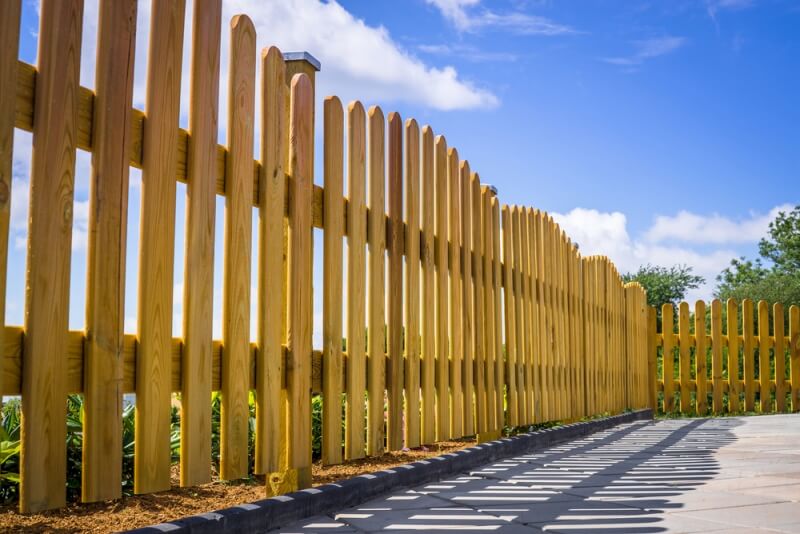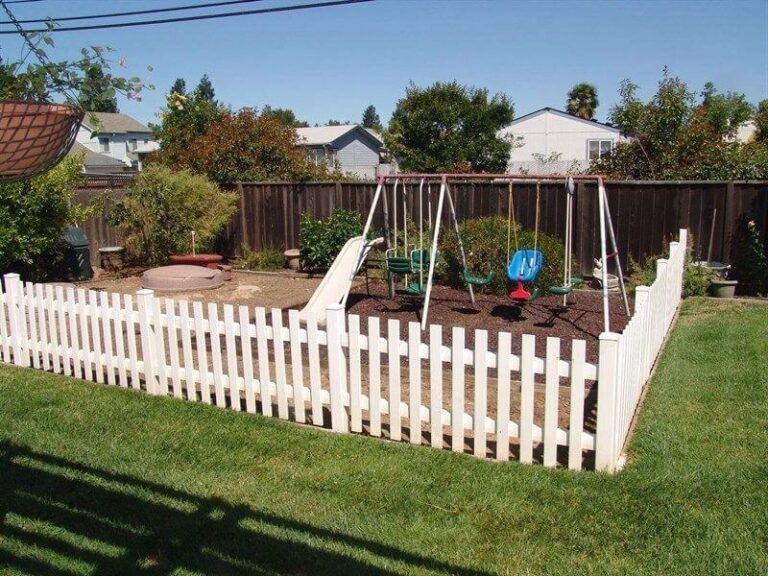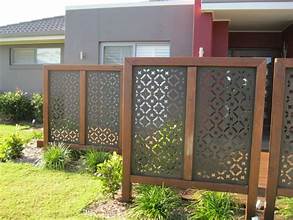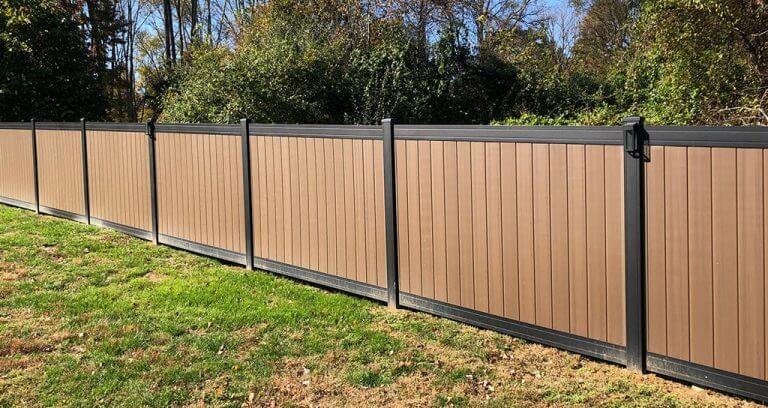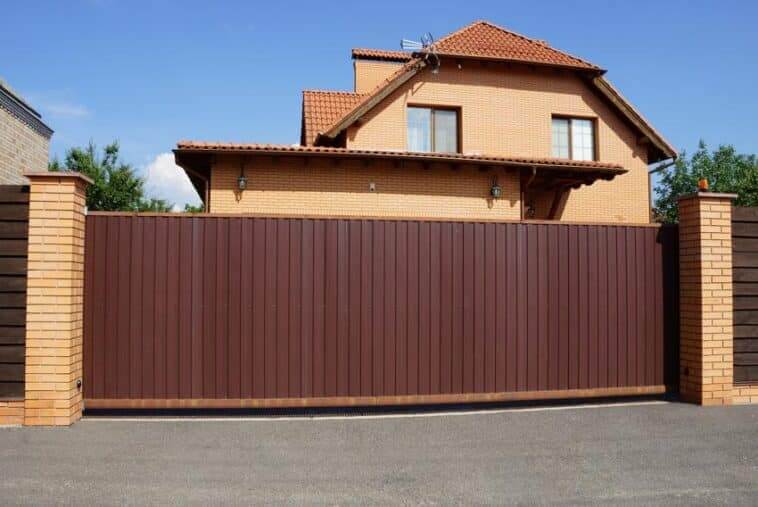Choosing fencing in extreme humid areas requires consideration of materials resistant to moisture and corrosion. To combat the effects of high humidity, select fencing materials such as vinyl, aluminum, or stainless steel, known for their durability in such conditions.
In areas with extreme humidity, selecting the appropriate fencing is crucial for ensuring durability and longevity.
The high moisture levels can lead to corrosion and decay of traditional fencing materials, necessitating careful selection to ensure the structure’s longevity.
This article will provide insights into the best materials for fencing in extreme humid areas and offer valuable tips for making a well-informed decision.
By considering the unique challenges posed by extreme humidity, you can ensure that your fencing installation will stand the test of time and efficiently protect your property.
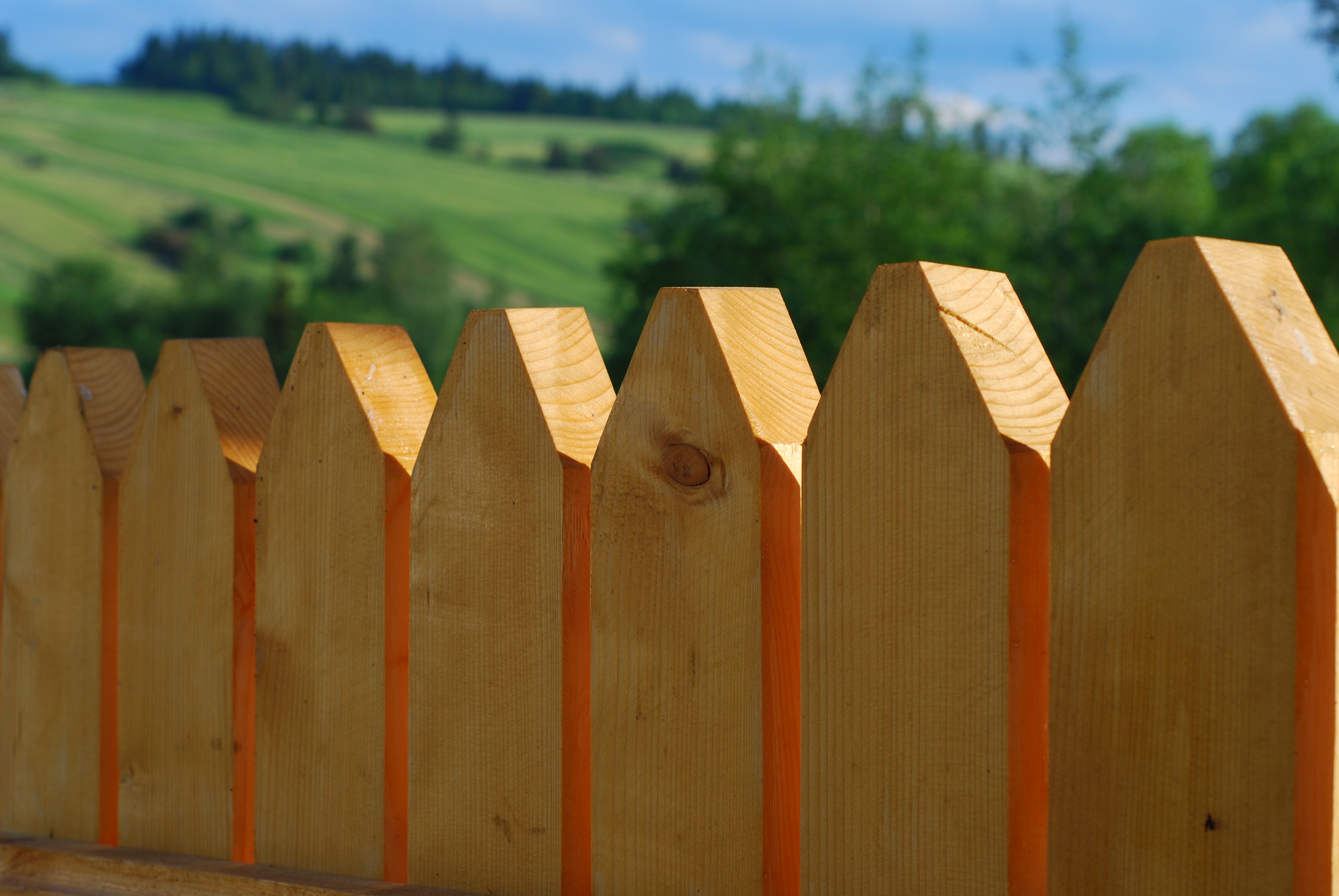
Understanding The Impact Of Humidity On Fencing Materials
Effects On Durability
High humidity levels can significantly impact the durability of fencing materials.
Constant exposure to humid conditions can lead to accelerated degradation of certain materials, leading to premature deterioration and reduced lifespan of the fence.
Susceptible Materials
Materials such as untreated wood and wrought iron are particularly susceptible to the adverse effects of humidity.
Untreated wood is prone to swelling and warping when exposed to high moisture levels, while wrought iron can be susceptible to corrosion in humid environments.
Importance Of Waterproofing
Waterproofing is crucial in mitigating the impact of humidity on fencing materials.
Applying a high-quality waterproofing sealant to wooden fences can help prevent moisture absorption and minimize the risk of swelling and warping.
Additionally, for metal fences, utilizing corrosion-resistant coatings can effectively protect against the damaging effects of high humidity.
Selecting Resilient Wood Varieties
Selecting resilient wood varieties is crucial for fencing in extremely humid areas. The high moisture content in these regions can pose a threat to the longevity of the fencing material.
By choosing suitable wood species and employing proper treatment and maintenance, you can ensure the durability and aesthetic appeal of your fence.
Resistant Wood Species
When it comes to selecting wood for fencing in high-humidity areas, opting for naturally resistant species can significantly contribute to the durability of the structure. Some notable options include:
- Cedar: Known for its natural resistance to rot and decay, cedar is a popular choice for humid environments. Its distinct aroma also acts as a deterrent to insects.
- Cypress: With its natural preservatives, cypress wood is highly resistant to decay and insect infestation, making it suitable for humid regions.
- Redwood: This durable wood species contains natural oils that enhance its resistance to decay and moisture, making it a viable option for humid climates.
Treatment Options For Humidity
Even with resilient wood varieties, treating the wood with suitable protective coatings is essential to enhance its resistance to extreme humidity. Consider utilizing:
- Waterproof sealants: Applying a high-quality waterproof sealant can mitigate the effects of humidity on the wood, preventing moisture penetration and fungal growth.
- Pressure treatment: Subjecting the wood to pressure treatment processes enhances its resistance to decay, making it more suitable for withstanding the challenges of high humidity.
Maintenance Considerations
In addition to selecting resilient wood and utilizing treatment options, regular maintenance is crucial to prolonging the lifespan of your fence in extremely humid areas. Maintenance tasks include:
- Regular cleaning: Removing dirt, mold, and mildew buildup with a gentle cleaning solution helps to keep the wood in good condition.
- Annual inspections: Periodic assessments of the fence for signs of damage or wear, and timely repairs, can prevent the escalation of issues due to humidity.
Exploring Synthetic Material Alternatives
Pvc And Vinyl Benefits
When considering fencing in extreme humid areas, PVC and vinyl materials offer several advantages.
These synthetic options are resistant to moisture, preventing warping, rot, and mold growth.
Their durability ensures long-lasting performance in high-humidity environments, making them a reliable choice for homeowners seeking low-maintenance fencing solutions.
Additionally, PVC and vinyl fencing are available in a variety of styles and colors, providing versatility and aesthetic appeal.
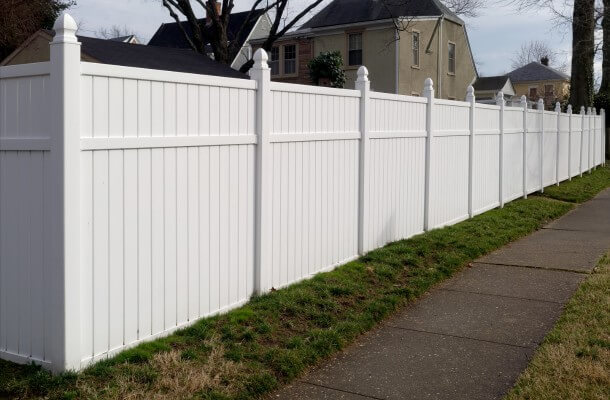
Composite Material Advantages
Composite materials present a compelling alternative for humid environments.
Comprising a blend of wood fibers and plastic, composite fences are well-suited for extreme humidity due to their resistance to moisture-related issues like rotting and decay.
With the look of natural wood and the durability of synthetic materials, composites offer an attractive and long-lasting fencing option for areas with high humidity.
Long-term Cost Efficiency
When evaluating fencing options for extremely humid areas, considering long-term cost efficiency is crucial.
Synthetic materials like PVC, vinyl, and composites may have a higher upfront cost, but their resilience in high-humidity conditions can lead to substantial savings over time.
These materials are low-maintenance, reducing the need for costly repairs and replacements associated with traditional wood fencing in humid climates.
Implementing Proper Installation Techniques
When it comes to choosing fencing for extreme humid areas, implementing proper installation techniques is crucial for ensuring longevity and durability.
The high humidity levels in these areas can accelerate the deterioration of fencing materials.
Making it essential to focus on preventing rot and mold growth, ensuring adequate ventilation, and enhancing durability with proper anchoring.
Preventing Rot And Mold Growth
Proper installation techniques play a significant role in preventing rot and mold growth in humid areas.
By using pressure-treated wood or rot-resistant materials for fencing, you can significantly reduce the risk of decay.
Additionally, applying a water-resistant sealant or stain to the fencing can provide an extra layer of protection against moisture-related issues.
Ensuring Adequate Ventilation
Adequate ventilation is essential in extreme humid areas to prevent the build-up of moisture within the fencing structure.
Proper spacing between individual fence panels and posts can facilitate air circulation, helping to mitigate the effects of humidity.
Additionally, incorporating lattice panels or open designs can further enhance ventilation and reduce the risk of moisture-related damage.
Enhancing Durability With Proper Anchoring
Proper anchoring is crucial for enhancing the durability of fencing in extreme humid areas.
Using corrosion-resistant hardware and anchors can prevent the degradation of the fence’s structural integrity due to prolonged exposure to moisture.
Additionally, ensuring a solid and secure anchoring foundation can minimize the risk of fence displacement or damage during severe weather events.
Regular Maintenance Practices
In extremely humid areas, regular maintenance of fencing is crucial to ensure its longevity and structural integrity.
The high moisture content in the air can lead to accelerated wear and tear, making it essential to implement effective maintenance practices to prevent issues such as fungal growth, decay, and structural damage.
Below are some key maintenance tips to consider for fencing in extreme humid areas.
Cleaning And Moisture Control
Regular cleaning of the fencing materials is essential to remove accumulated dirt, grime, and moisture, which can contribute to fungal growth and decay.
Use a gentle cleaning solution and a soft brush to clean the surface of the fencing material, and ensure thorough drying afterward to prevent moisture buildup.
Moisture control is also crucial in extreme humid areas. Consider applying a water-resistant sealant to the fencing material to provide an additional layer of protection against moisture absorption.
This can help minimize the risk of fungal growth, decay, and structural damage caused by prolonged exposure to high humidity levels.
Inspection Frequency And Tips
Regular inspection of the fencing should be conducted to identify any signs of wear, damage, or fungal growth.
Frequent inspections help in identifying potential issues at an early stage, allowing for prompt repairs and maintenance.
Be sure to check the fencing for cracks, discoloration, or soft spots, which can indicate moisture-related problems.
Tips for inspection include looking for mold, mildew, or discolored patches on the fencing material, as these may indicate fungal growth.
Additionally, pay attention to any loose fittings, rust, or signs of structural weakness that may compromise the integrity of the fencing.
Addressing Fungal Growth And Decay
Fungal growth and decay are common concerns in extreme humid areas. To address these issues
It is crucial to promptly remove any visible mold or mildew from the fencing material using a mildew-resistant cleaning solution.
Additionally, address the source of the moisture to prevent further fungal growth and decay, such as improving ventilation and drainage around the fencing area.
Ensuring adequate air circulation around the fencing can help minimize moisture buildup and reduce the risk of fungal growth.
Consider trimming vegetation and ensuring proper drainage to prevent water accumulation near the fencing, which can contribute to decay and structural damage.
Frequently Asked Questions
What Fencing Materials Work Best In Humid Areas?
In extreme humid areas, vinyl, aluminum, and composite fencing materials are ideal due to their resistance to moisture and durability.
How Can I Prevent Mold And Mildew On My Fence?
Regularly cleaning the fence with a mild detergent and water solution, and ensuring proper ventilation around the fence can help prevent mold and mildew build-up.
Are There Specific Fence Designs Suited For Extreme Humidity?
Fence designs with minimal surface area and good airflow, such as lattice or spaced picket styles, are better suited for extreme humid areas due to their ability to minimize moisture retention.
Conclusion
In humid areas, choosing the right fencing is crucial. The right materials and maintenance are key to combating moisture.
It’s important to consider factors like durability and resistance to rot and mold. By understanding these tips, you can select fencing that will withstand extreme humidity and enhance your outdoor space for years to come.

